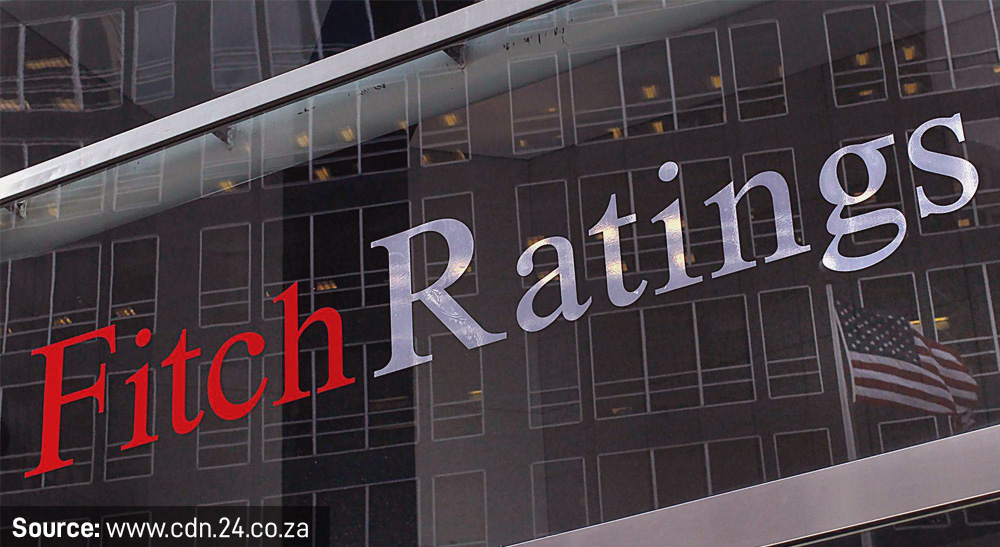In a country desperate for Gross Domestic Product (GDP) growth, Fitch’s commentary released last week comes as a bit of a blow.
On 19 January, the credit rating agency affirmed South Africa’s long-term foreign-currency issuer default rating (IDR) at “BB- with a stable outlook”.
From AA to CC, the Fitch ratings may be accompanied by a + or – modifier to specify the “rating notches”. These notches can be attached to each grade.
“BB” ratings indicate an elevated vulnerability to default risk, particularly in the event of adverse changes in business or economic conditions over time. However, business or financial flexibility supports the servicing of financial commitments.
Among key rating drivers, the agency notes the country’s weak GDP growth outlook.
As the International Monetary Fund explains it, the growth rate of real GDP is often used as an indicator of the general health of the economy. In broad terms, an increase in real GDP is interpreted as a sign that the economy is doing well. When real GDP is growing strongly, employment is likely to be increasing as companies hire more workers for their factories and people have more money in their pockets. When GDP is shrinking, employment often declines.
According to Fitch’s forecast, South Africa’s real GDP growth will accelerate to 0.9% in 2024 and to 1.3% in 2025, from an estimated 0.5% in 2023.
Statistics SA states that the average inflation rate for last year was 6%. Inflation is expected to decline to 5% this year and 4.5% in 2025, according to a Reuters poll.
Besides low real GDP growth, Fitch says the country’s BB- IDR is constrained by power shortages, a struggling logistic sector, and a high and rising government debt-to-GDP ratio.
But it isn’t all bad news. Fitch says the ratings are supported by “a favourable debt structure with long maturities and mostly local-currency-denominated, strong institutions, as well as a credible monetary policy framework”.
Power generation capacity
Fitch estimates that loadshedding will reduce in intensity in 2024 and 2025 compared with 2023, but not disappear.
According to the agency’s commentary, the peak of loadshedding declined from 6.7GW in May 2023 to 3.5GW in December 2023.
“The return to the grid of three units of Kusile power station since September 2023 and the synchronisation of unit 5 in December 2023 add a total 3.2GW to generation capacity. Further capacity is expected to come from private sector investments, with a pipeline of confirmed projects representing 12GW of new capacity.”
Commenting on the legal separation of Eskom into three divisions, intended to further catalyse investment in generation and transmission, Fitch says it is moving slowly.
“We do not expect full separation before 2025.”
Struggling logistics sector
In its commentary, Fitch highlights financial, operational and governance weaknesses at Transnet, and the disrupted supply chains experienced last year that caused “significant delays at ports and decreased rail freight volumes”.
To address its immediate liquidity constraints and support its recovery plan, the government granted a R47 billion (0.7% of GDP) guarantee facility in December 2023. Transnet plans to announce a five-year strategic plan by March.
Fitch assesses that the fiscal support, through either capital injections or debt transfer, is likely given the importance of Transnet in the economy.
“We have assumed R50bn below-the-line support in our debt projections, split between the fiscal year ending in March 2025 (Fitch-defined financial year 2024) and FY25. The opening of Transnet’s infrastructure to third-party freight operators in 2Q24 would help improve the performance of the logistics sector.”
Rising government debt
Fitch expects general government debt to reach 83.2% of GDP in FY25, from an estimated 76% in FY23, “well above the anticipated 2023 BB median of 52.2% BB”.
“Government debt will increase due to a primary surplus below its debt-stabilising level, weak growth, and large stock-flow adjustments driven by the revaluation of inflation-linked bonds, foreign-currency denominated debt, discount on loan transactions, debt transfers from Eskom, and the assumed debt transfer from Transnet. Total Transnet debt amounts to R130bn,” the agency says.
To contain debt accumulation, the government plans to present a new fiscal anchor in the FY24 fiscal bill to be presented in February.
Inflation and socio-political risks
Other key rating drivers Fitch touches on are inflation tapering and elevated socio-political risks.
According to Fitch’s estimations, South Africa’s CPI inflation declined to 5.5% at the end of 2023, down from 7.2% at the end of 2022. Fitch says inflationary pressure stemming from a weak rand, the cost of loadshedding for businesses, and supply chain disruptions will be cushioned by South Africa Reserve Bank’s hawkish, higher-for-longer stance, enabling CPI inflation to decrease to 5% at the end of 2024, within the central bank’s 4.5% (+-1.5%) target band.
“We believe the Sarb has completed its tightening cycle and will leave the policy rate at 8.25% until 1Q24,” Fitch says.
Fitch states that the country’s unemployment rate moderately declined to 32.2% in 3Q23, from a record high of 35.4% in 4Q21, but remains much higher than before the pandemic.
The agency believes that the high unemployment rate, “in conjunction with an exceptionally high level of income inequality”, will continue to constrain fiscal consolidation and pose a risk to socio-political stability, leading to frequent strikes and protests.
Fitch predicts the ANC could lose its majority in general election this year, but this is unlikely to result in major changes in economic policy.
What the government says
Noting Fitch’s latest rating and commentary, National Treasury released a media statement saying that, over the medium term, the government would focus on raising GDP growth “by improving the provision of electricity, logistics, and enhancing the delivery of infrastructure”.
Treasury said that fiscal policy continued to support this approach by stabilising debt and debt-service costs.
“The government reiterates that fiscal consolidation will be implemented through spending reductions, efficiency measures across government and moderate tax revenue measures,” the statement read.



